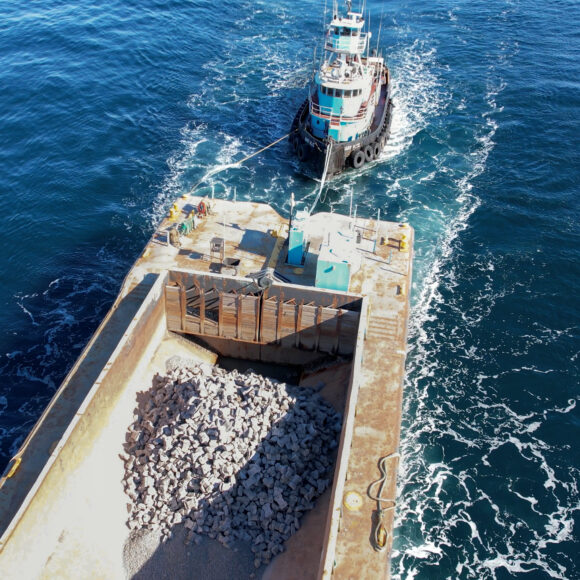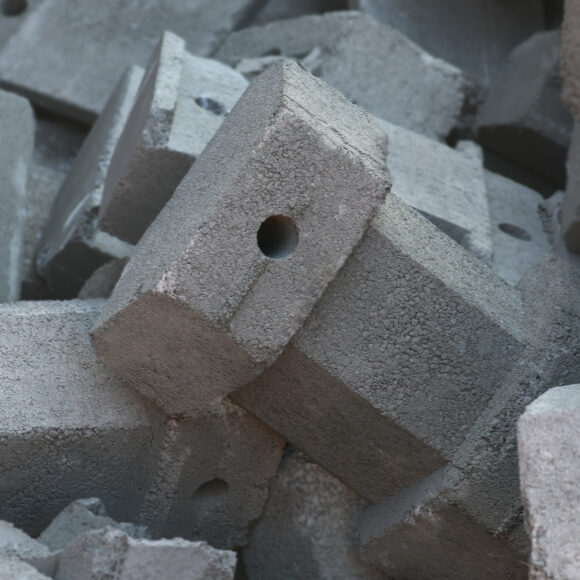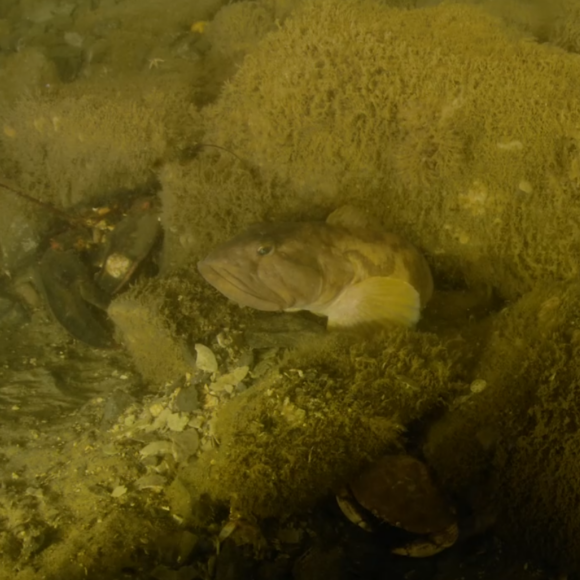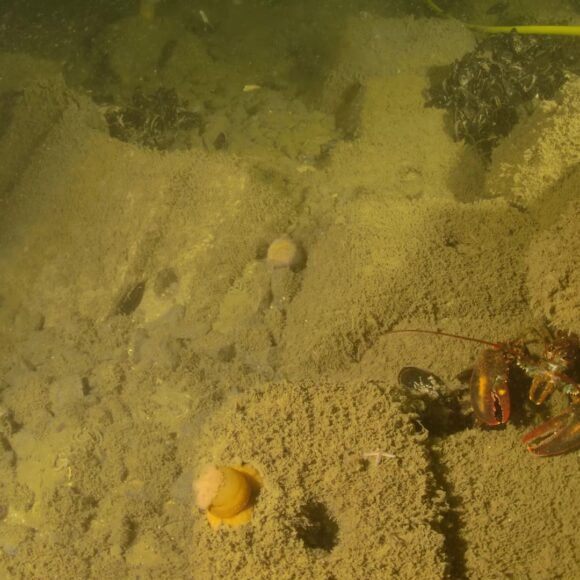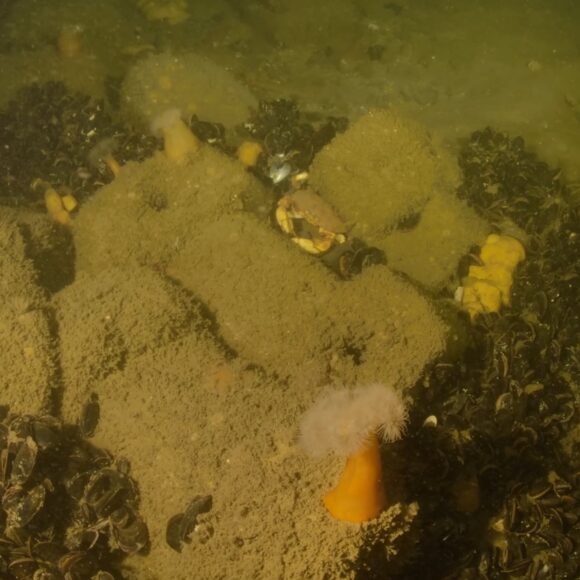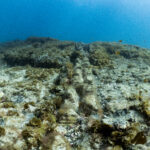ECOncrete Scour Protection: Fisheries and Biodiversity Research Project
Objectives
The project evaluates the effects of nature-inclusive design (NID) scour protection on marine biodiversity and fish populations compared to traditional scour protection methods.
Short description
Scour protection is designed to protect offshore wind monopiles from scouring (erosion of the seabed around the base of a wind turbine’s foundation) and various materials can be used to achieve this. In 2022, ECOncrete, in coordination with the New York State Department of Environmental Conservation (DEC), deployed over eco-engineered scour protection units at the Twelve Mile ReefThe Twelve Mile Reef testing site is located in the Atlantic Ocean, 12.0 nautical miles from Moriches and Shinnecock Inlets and extends for 850 acres (2025 yards x 2025 yards) wide, and 123 to 143 feet deep. , an offshore site off Long Island, New York. They also deployed 300 tons of rock material as a control to compare the results on biodiversity compared to their engineered units. The NID scour protection units are locally manufactured and were installed with standard offshore wind installation equipment and procedures.
In October 2023, a few months after the installation of the scour protection, research teams from Stony Brook University initiated a 12-month biological monitoring programme in collaboration with ECOncrete. This programme included environmental DNA (eDNA) analysis, high-resolution multi-beam mapping, and finfish habitat and community modelling, using the Black Sea Bass as an indicator. Supported by the New York State Energy Research and Development Authority (NYSERDA), this monitoring assessed biological growth within the scour protection system and surrounding seabed environments, focusing on changes in fish populations and diversity supported by the scour protection units.
The results of the monitoring programme 18 months post-deployment revealed that the NID scour protection solution enhanced habitat potential for local species and improved the ecological function of both the NID scour protection and its surroundings, leading to increased biodiversity compared to the rock control site. Additionally, extensive 3D physical model tests were conducted at the Polytechnical University of Madrid (Spain) and the Coastal and Ocean Basin in Ostend (Belgium) to assess the hydraulic stability of the NID scour protection system around the monopile on both hard and a movable (sandy) seabed. These tests, performed under severe wave load conditions and using different scour protection configurations to simulate real-world conditions in the Atlantic Ocean and North Sea, confirmed the feasibility of this innovative solution.
These findings demonstrate the capability of ECOncrete’s NID scour protection systems in reducing the ecological footprint of offshore wind infrastructure on marine ecosystems and supporting fish populations in the surrounding area. At the same time, these scour protection systems meet industry requirements for durability, hydraulic stability, and seamless operational functionality.
